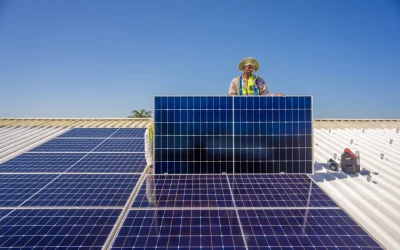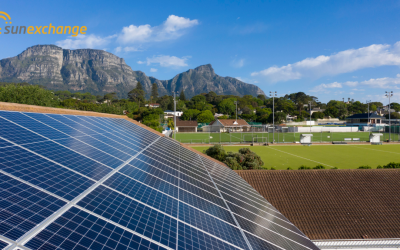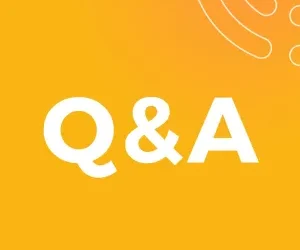Since announcing SunEx’s pivot, we’ve engaged directly with many of you to address questions and concerns about your solar cells. In last week’s blog post we answered some of the most common questions we’ve received and confirmed that a sale to a third party and payout for solar cell owners is the most likely scenario for the future of the solar project portfolio. Based on your latest feedback and questions, we thought it would be helpful to focus on one topic more in-depth: What led to the decision to sell the solar project portfolio? Below, we aim to answer that question in detail and provide clear insight into why the Trust, in representing the solar cell owner community, ultimately decided on selling the solar project portfolio and paying out solar cell owners as the best path forward.
As you read on, please keep in mind that this is an evolving situation. While we don’t have all the answers yet, we will continue to do all we can to ensure you feel supported and informed throughout the process.
The role of the SunEx Bewind Trust
In order to understand the decision to sell the portfolio of solar projects, it’s crucial to understand the role of the SunEx Bewind Trust, since it is the entity representing the interest of the solar cell owners in this process. The Bewind Trust acts as the custodian of all solar projects SunEx has sold to its community and represents the interests of solar cell owners. As per South African law, Trustees of the Bewind Trust have a fiduciary duty to ensure the proper administration and disposal of trust property, even if they are not the owners.
The economics of crowdsales and the platform
As discussed in our recent communications, in 2022 SunEx experienced a significant decline in crowdsale demand. Sales were impacted by both external and internal factors. This included the global economic climate and rising inflation, shifts in the bitcoin landscape, regulatory challenges and limitations, as well as the impact of load shedding on solar cell owners’ earnings and payment problems with two of our largest solar projects — Nhimbe Fresh and Karoo Fresh — which disappointed many of our solar cell owners. We spent the better part of the last two years doing all we could to turn around the decline in crowdsale demand and make the economics of the platform work. We tried changes in leadership, staff reductions, and various marketing approaches and agencies, all to no avail.
The decline came at a time when solar power customers were demanding more funding for larger, storage-integrated solar projects given the rising levels of load shedding and frequency of power outages in South Africa. For many customers, solar-only installations without backup power were no longer enough to meet their energy needs but slowing crowdsales were unable to meet the funding needs of the more expensive storage-enabled projects. This was compounded by the fact that we could not upgrade any of our existing solar plants due to the limitations inherent in the Trust structure and the direct asset ownership model. Further constraining our ability to increase project returns and meet the demands of our solar power customers.
This discrepancy between supply and demand is what led to the creation of our corporate and institutional funder programme in the first place — it offered a lifeline to continue funding solar and storage projects for schools, retirement homes, farms, etc., even while retail crowdsale demand declined. The plan initially was for it to run in parallel with our crowdsales – for corporate funders to become beneficiaries of the Trust.
However, after two years of continual sales declines despite our best efforts, in late 2023 the Board of SunEx, Inc. concluded that the company could no longer sustain the high costs of the platform and the staff and resources required to manage and maintain it. After much deliberation, the decision to discontinue crowdsales and decommission the platform was made. This incredibly challenging and complex decision was not made lightly. Not only did it mean disappointing our community of solar cell owners that has been at the core of SunEx since its founding, but it also meant forgoing a solution that the company and its owners have spent years of hard work and millions of dollars developing. Unfortunately, we reached a point where allowing our struggling crowdsale offering and platform to drag down the rest of the company would be irresponsible and unfair to all of our stakeholders, which include our solar cell owner community, but also the solar power consumers, SunEx staff, investors and more.
Making the decision to sell the solar project portfolio
Without the platform and associated staff and resources, the SunEx Bewind Trust, as the custodians of the solar projects, has no viable means to manage the ongoing needs of the solar cell owner community and the project portfolio. While revenue from the solar projects can cover the projects’ own operating costs, it cannot also cover the costs of managing nearly 10,000 solar cell owners around the globe.
As the need to wind down our crowdsales and platform was becoming clear, our leadership, board and the SunEx Bewind Trust embarked on an intensive analysis of potential scenarios for the future of the solar project portfolio. The goal was to determine the route that offered the best value to solar cell owners.
We looked closely at what the reality would be of having the SunEx Bewind Trust carry on with the administration of the projects in the long term. Unfortunately, on the heels of the greylisting of South Africa last year, the regulatory landscape shifted significantly in a relatively short period of time. The Trust and other parts of the business involved in administering the solar projects and solar cell owner community now face much more onerous reporting, compliance and tax withholding requirements, which were not initially factored into solar cell owner earnings forecast. These costs would ultimately need to be absorbed into the costs of managing the solar project portfolio and would likely result in cash flows being negative, leaving the trust without the funds to pay for the ongoing management of the solar projects and pay cell owners any earnings.
Our analysis ultimately concluded that a sale of the portfolio is the option that would offer the best value for solar cell owners and was one of the only viable routes to giving certainty on the return.
The chart below compares the net present value of a sample of 61 solar projects representing the majority of the solar projects, and solar cell owner earnings under various scenarios.

- Column 1 – Forecast Expected NPV: For reference and comparison, this is the net present value (NPV) of the future cash flows of the solar projects assuming the projects generated revenues and costs in line with the original modeling assumptions. This is what we “expected” the cash flows to look like. These were never guaranteed cash flows but modeled forecasts.
- Column 2 – Forecast Load Shedding Impacted NPV: This column represents an estimated NPV of future cash flows for solar cell owners if the platform remained viable and active – essentially if all things had remained the same. This NPV is closer to the current performance of the assets and the forecast takes into consideration the ongoing and long term impact of load shedding which has risen dramatically since late 2021, resulting in a 15 – 20% reduction in historical and future cash flows. Again, this is a forecast and load shedding could get worse, further reducing the returns to cell owners.
- Column 3 – Forecast NPV after Beneficiary Costs : This column represents a scenario in which the Trust takes over the administration and management of the solar project portfolio. Namely, the NPV of future cash flows, offset by the costs of supporting the platform and implementing the requisite compliance. Currently, SunEx covers all platform costs (including tech development, customer support, marketing, finance and legal), as the platform was the focus of our business strategy. With the pivot away from the platform, the Trust will need to absorb these costs. There are also further compliance costs due to the greylisting of South Africa in February 2023 and new requirements from the South African Tax authority, which has mandated the provision of tax information for all members to the Tax authority, and the withholding of tax for foreigners of 45%. The Trust has no income of its own – its income is the rental received from solar power customers, which it distributes to cell owners after the deduction of costs. Our forecasts predict that this will result in the Trust having a negative cash flow for the foreseeable future.
- Column 4- Forecast Third Party Sale Value: This column shows the expected NPV of future cash flows from a corporate buyers perspective which importantly would not include the costs of managing 10,000 cell owners and the requisite compliance and management costs.
Hopefully, the information above helps to clarify why selling the solar project portfolio and issuing payouts to solar cell owners is the most beneficial outcome for all stakeholders, especially solar cell owners.
Latest status and next steps
We have been in negotiation with several institutional buyers, and are now in advanced discussions with one potential buyer and a sale is impending. As recently communicated, one of the latest developments are the updates made to your solar cell owner agreements (viewable on your dashboard) to make plain the process by which the sale will occur and proceeds will be allocated to solar cell owners. It’s important to note that per the SunEx Terms of Service, SunEx retains the right to update the Cell Owner Agreement periodically. While there are new terms explaining the sale of your solar cells and the distribution of proceeds, the SunEx Bewind Trust has always held this authority in alignment with its fiduciary responsibility to the Trust’s beneficiaries as described earlier in this post. The amendments to the Cell Owner Agreements simply make unambiguous this arrangement.
Your projects, solar cells and wallet funds remain secure and will continue to be serviced and maintained by SunEx as usual until all the projects are sold. You will continue receiving monthly earnings and can withdraw as desired, and you can track the performance of your projects via your dashboard.
As this transaction proceeds over the coming days and weeks, we will continue to share details and information to provide clear visibility into the current status and future of your solar cells.
We know this is a challenging time for you and much of the SunEx community and we appreciate your continued patience and support. If you have any other questions or concerns, please reach out — we’re here to help.




